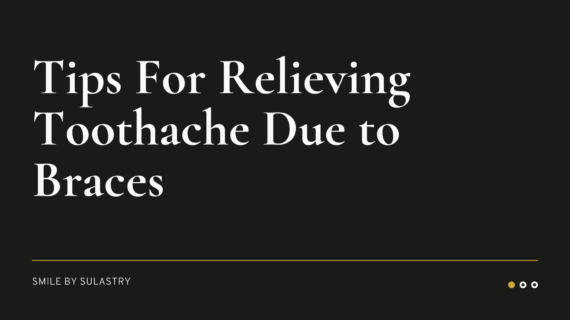Side Effects of Dental Crowns – Dental crowns are useful for restoring the shape, size and strength of teeth. In addition, dental crowns improve appearance and protect teeth from decay. Even though the benefits are so varied, the installation of dental crowns is also not free from the emergence of side effects. Preparing and placing a dental crown can relieve many uncomfortable symptoms, but this procedure may have temporary side effects. This article will tell you about dental crowns and side effects of Dental Crowns.
Also Read Tips For Relieving Toothache Due to Braces
What are Dental Crowns ?
Based on Clevelandclinic, Dental crowns are tooth-shaped “caps” that can be placed over your tooth. Think of it like a snug hat for your tooth. The crown restores the tooth’s shape, size, strength and appearance.
The dental crowns is cemented into place on your tooth and it covers the visible portion of the tooth.
Over time, your teeth can get damaged. This can happen for a variety of reasons, like tooth decay, injuries or just use over time. Your teeth can lose their shape or size.
Why would I need a dental crown?
You may need a dental crown for several reasons, including:
- Protecting a weak tooth (possibly from decay) from breaking or to keep the weak tooth together if parts of it are cracked.
- Restoring a broken tooth or a severely worn down tooth.
- Covering and supporting a tooth with a large filling and not much tooth remaining.
- Holding a dental bridge in place.
- Covering misshapen or severely discolored teeth.
- Covering a dental implant and a tooth that’s been treated with a root canal.
Side Effects of Dental Crowns
Dental crowns function as sheaths that cover the entire surface of natural teeth. Oftentimes, these tools also need to be in direct contact with the gums in order to be able to provide stronger support for the natural teeth.
Given its position so close to the tissue around sensitive teeth, here are a list of risks that can occur:
1. Teeth Become More Sensitive
This is the most common side effect of fitting a dental crown. Especially if the tooth that has just been fitted with a crown still has complete nerves.
Teeth can be very sensitive to hot, cold, and certain foods.
If the tooth feels uncomfortable or painful when biting, it could be because the crown is placed too high.
Try to consult a doctor to solve this problem. Doctors can perform certain procedures to correct the position of the dental crown.
2. Dental Crowns Can Be Loose
Over time, the adhesive material for dental crowns can gradually erode. This not only makes the crown loose, but also allows bacteria to enter and causes the tooth to decay.
As a result, the crown is no longer firmly attached to the natural tooth.
Another possible side effect is the removal of the crown from the natural tooth. The reason could be because the crown is not attached properly or the adhesive is not strong enough.
Doctors can usually put the crown back on easily. However, if the crown or natural tooth has been damaged, the doctor will need to make a new crown.
3. Dental Crowns Broken
Crowns are made by porcelain can break under a lot of pressure.
Pressure can come from biting your nails and hard objects, eating hard foods, opening food packages with your teeth, or other behavior that damages your teeth.
Cracks or small fractures in the dental crown can still be repaired by attaching a resin composite material.
While the damage is severe, the doctor may need to reshape the dental crown or replace it with a new one.
4. Allergic Reactions
Dental crowns have parts made of various metals.
For people who are allergic to metal or porcelain, placing dental crowns can actually trigger an allergic reaction. This side effect is rare, but crown users still need to be vigilant.
Reporting from the Journal of Clinical & Diagnostic Research, symptoms of allergy to dental crowns include:
- Burning sensation in the mouth or gums
- Gingival hyperplasia, which is an overgrowth of gum tissue
- The tongue is numb
- Inflammation of the mouth of the lips
- Rash around the mouth
- Muscle and joint pain and impaired heart function in people allergic to titanium metal
5. Gum Problems
Crown owners are more at risk of developing gingivitis.
This disease is characterized by inflammation of the gums so that the gums appear reddish and bleed easily. To prevent this, you need to make efforts to maintain oral hygiene every day.
If left untreated, gingivitis can get worse and cause the gums to pull from the dental crowns.
This side effect will affect appearance because the crown appears to be separated from the gum that supports it.
Crowns can restore tooth shape and protect it from decay, but they cannot ward off tooth decay or gum disease.
Therefore, you should always keep your teeth clean by brushing them 2 times a day.
After brushing your teeth, clean the crevices using dental floss.
Focus on the gaps where the crowns meet with the gums to remove any remaining food. Don’t forget, rinse your mouth with an antiseptic solution at least once a day.
Source :

